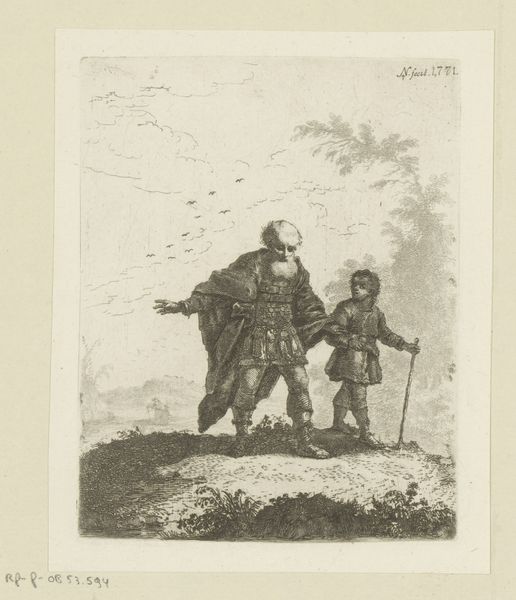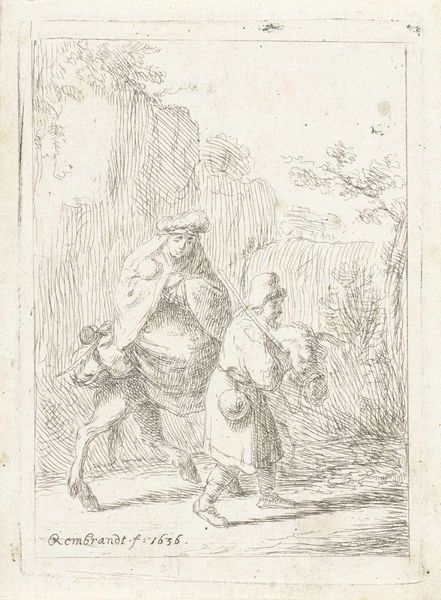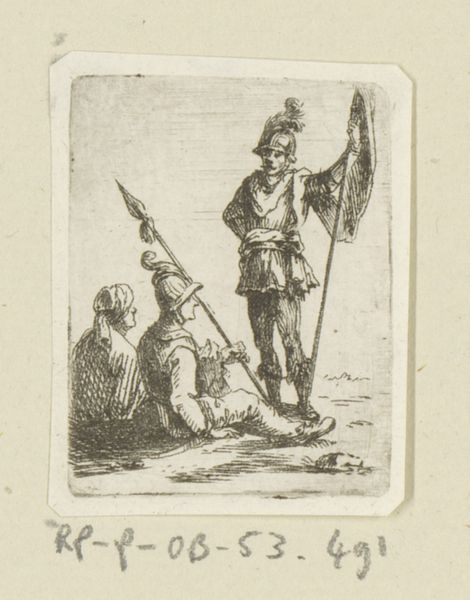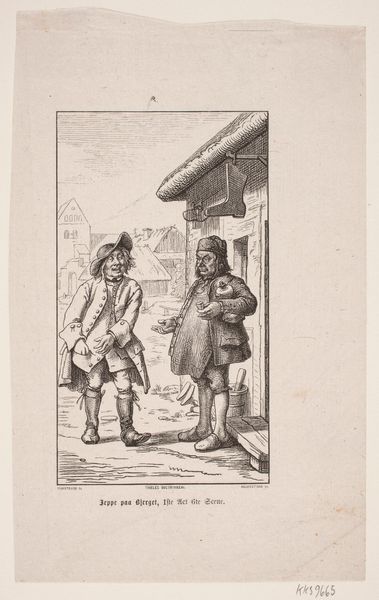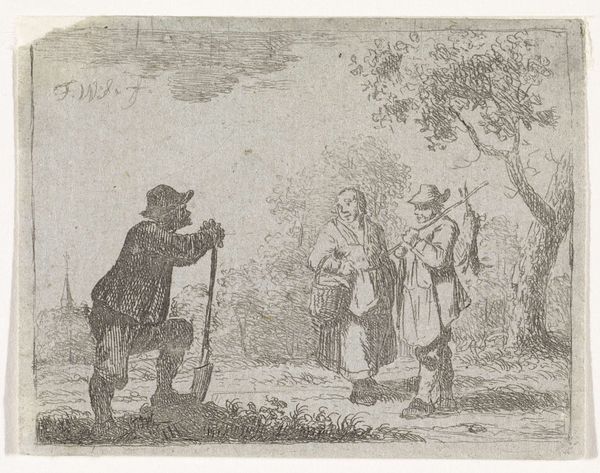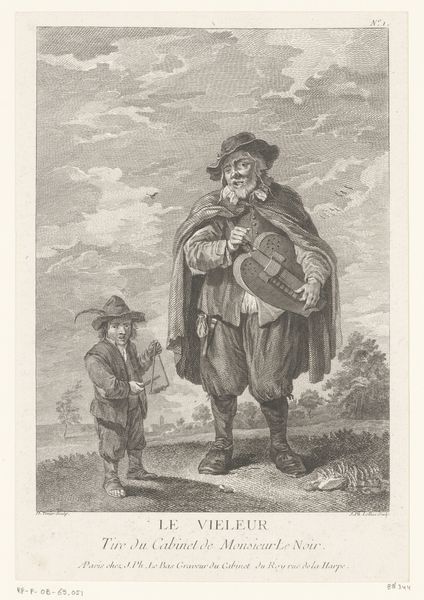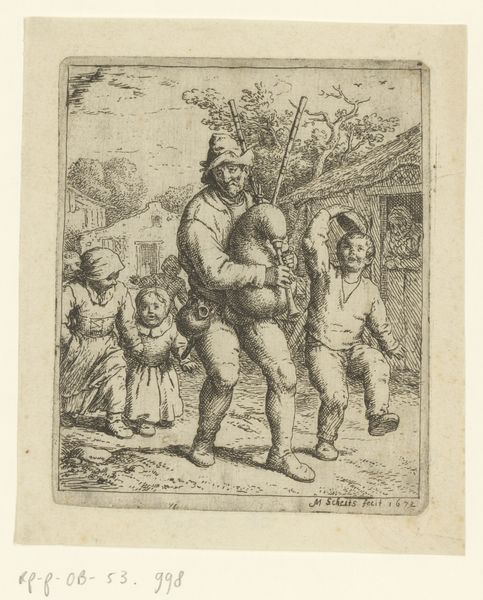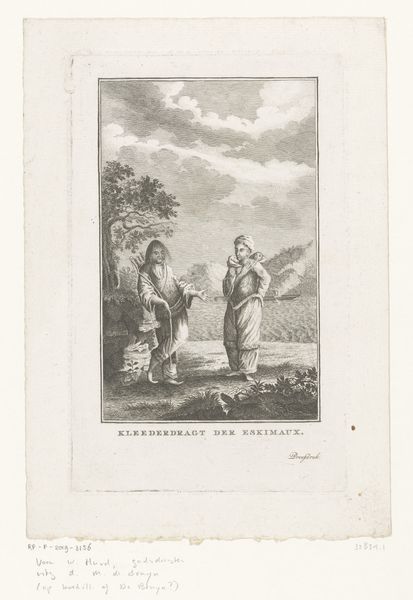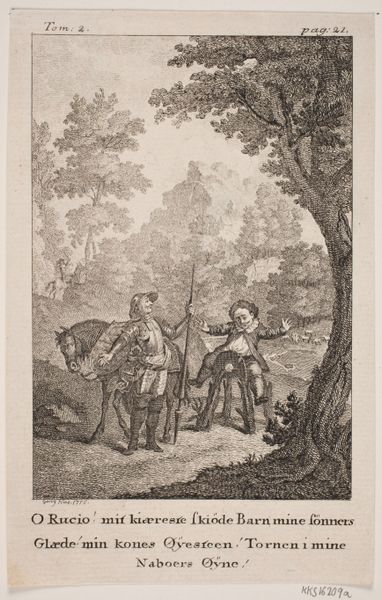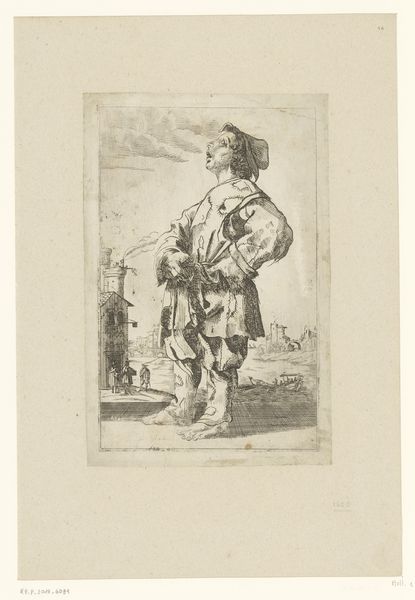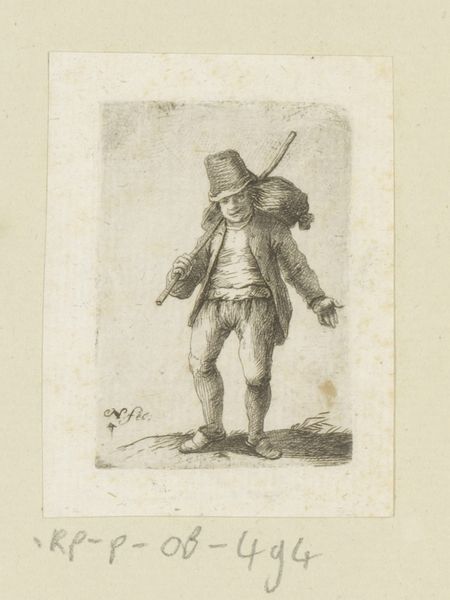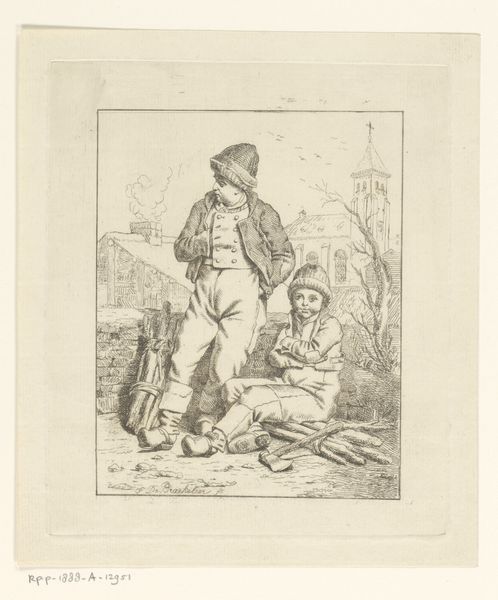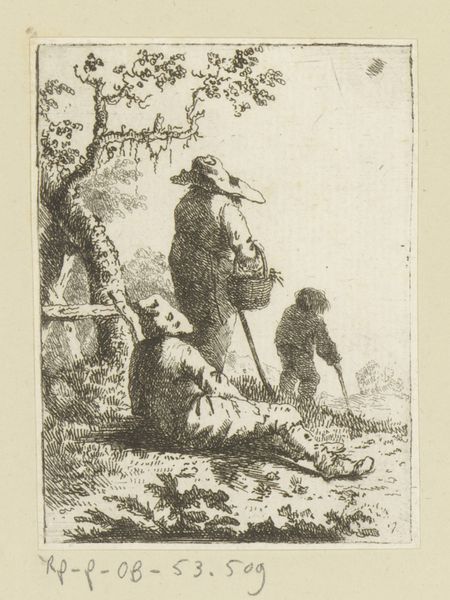
drawing, paper, ink, engraving
#
drawing
#
landscape
#
figuration
#
paper
#
ink
#
history-painting
#
engraving
Dimensions: height 149 mm, width 117 mm
Copyright: Rijks Museum: Open Domain
Johann Andreas Benjamin Nothnagel created this print of Belisarius and the Boy sometime in the 18th century, using etching. This is an intaglio process, where acid eats into the metal plate. Look closely, and you can see how the fine, closely-hatched lines create the image. The success of an etching depends on the amount of time the plate is exposed to acid. This is a tricky skill, as over-exposure can ruin the plate entirely. Printmaking was essential to the development of capitalism, allowing images and texts to be widely reproduced. This dramatically reduced the cost of visual communication. The rise of printmaking gave artists like Nothnagel a way to disseminate their ideas and earn a living, albeit one subject to the vagaries of the market. Etching, in particular, allowed for a relatively direct, expressive quality, lending itself to sophisticated artistic effects. So, while the subject of this print might seem far removed from the world of production, the print itself is very much a product of its time.
Comments
No comments
Be the first to comment and join the conversation on the ultimate creative platform.
